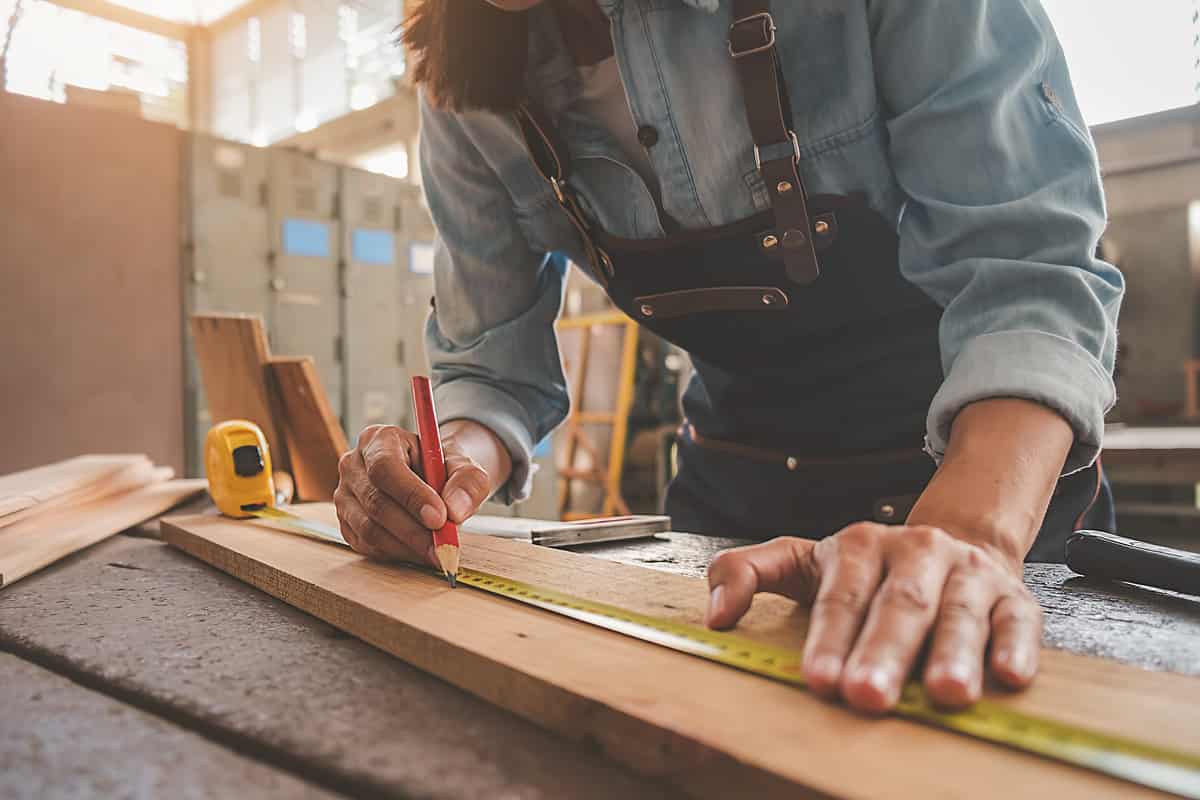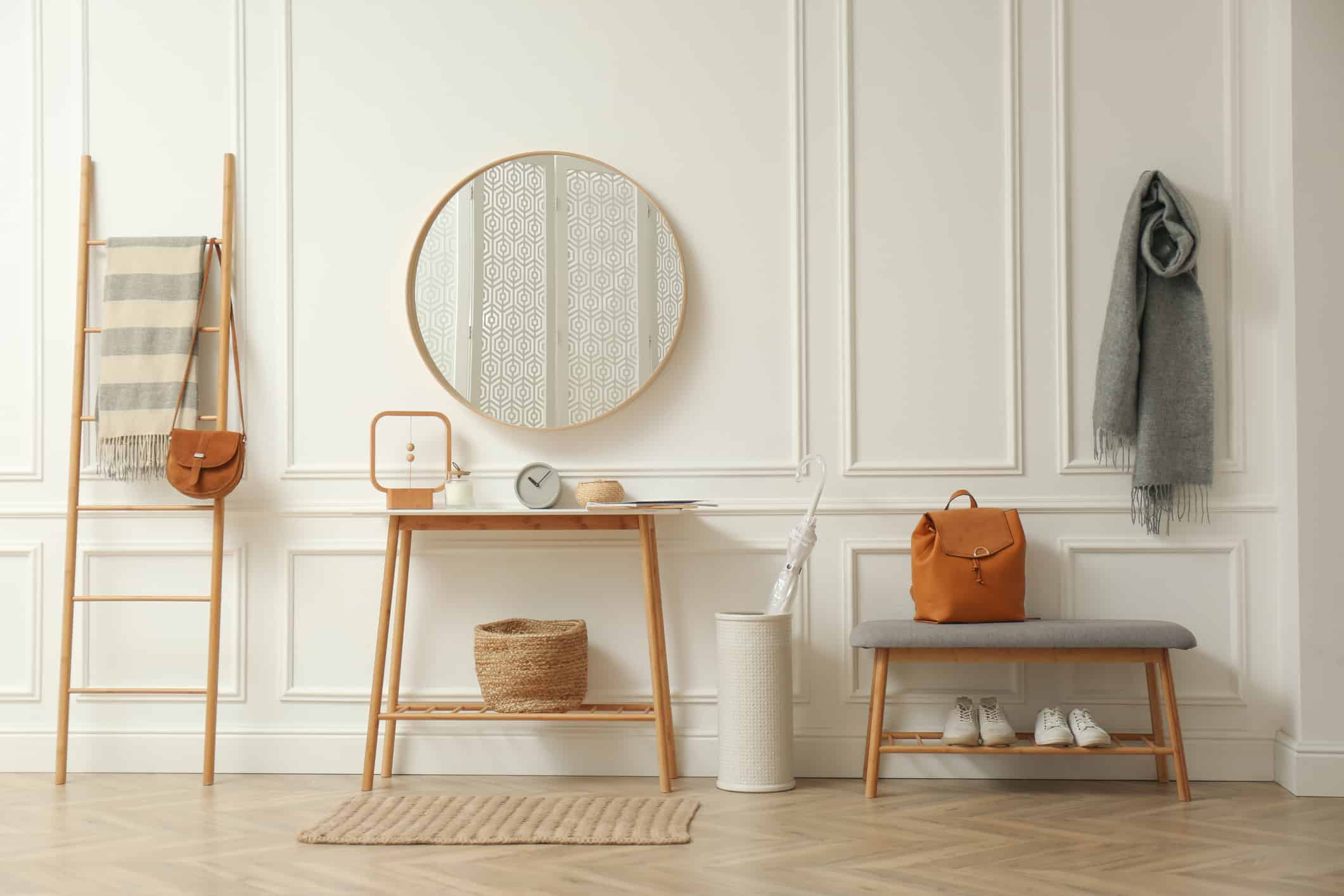If you’re building or remodeling a house, you’ll likely add one of two types of molding to your baseboards. The differences between quarter round and shoe molding include the size, shape, and primary function. Quarter round is typically used to conceal a gap between the floor and the wall while shoe molding is typically more for decoration. Let’s learn more about the differences of shoe molding vs. quarter round.
In many cases, both quarter round and shoe molding can be used interchangeably, but they aren’t necessarily the same thing, nor do they always serve the same purpose. The best way to understand both products is to define their use and characteristics.
What is Shoe Molding?
Shoe molding, also known as base shoe, is a thin strip of molding that’s usually less than one inch high that’s designed to finish out the look of the baseboards. It’s the bottom strip that touches the ground. It can be designed in many ways, but it’s often a round or curved shape. In addition to offering a unique look, its purpose is to be a versatile cap that can cover seams between the baseboard and the flooring. Shoe molding is taller than it is wide, typically coming at ¾ inch on one side and ½ inch on the other side.
There are typically two types of shoe molding. There is a standard shoe that is usually like a narrow quarter round with a flat front or a square look. There’s also decorative shoe molding that can have patterns to give the room more style.
What is a Quarter Round?
This is a different molding style that’s often at the bottom of the baseboard, and it has the purpose of covering the space or gap between the floor and base. It pretty much offers the same exact service as shoe molding. However, while shoe molding has many variations, quarter round is almost always in the shape of a quarter of a circle. It has a 90-degree angle, and it usually comes as ¾ by ¾ inch.
Molding Production Options
Both quarter round and shoe molding can be made with different products:
Wood
Wood will give you a classic style, but it’s typically a more expensive endeavor. Most quarter rounds are made of wood. Plus, wood is a sustainable building choice, which is popular with many homeowners and helps the planet. Wood rarely warps or cracks, so it will last a lifetime. However, it’s tough to install, and it won’t always have the most clean appearance, but it usually works out great.
Polystyrene
Many people go with this option or PVC because both are lightweight, easy to install, and incredibly durable. It’s also very resistant to moisture, which is key if you ever experience a water leak in your home. Polystyrene is also less expensive, but unfortunately it can look cheaper as well. Still, if you’re not picky, then it’s a perfectly wonderful choice.
Vinyl
This is a great option for both indoor and outdoor installation. It comes as bright white, but it can be painted or stained to your liking. It’s also a great option that resists rot, moisture, and termites.
MDF
That's a Medium-Density Fiberboard, which can look like wood, but it’s more versatile, and it can be used in all rooms of a house for just about any home. Since it’s produced, there will not be any imperfections, but it also isn’t as sustainable. It’s a high-end material, and it can make your house look very classy.
Shoe Molding vs. Quarter Round: What are the Differences?
The main difference is that a quarter round is typically larger, and it takes up a bit more space because it comes into the room. Some homeowners don’t like either type of molding because they think it infringes into the room and makes it appear smaller.
Both products are quite similar, and it’s mostly the shape and style. However, there are some minor differences for when you would use shoe molding vs. quarter round.
When to Use Shoe Molding and Quarter Round

Always measure twice and cut once to ensure your molding is just right.
©Mind_AND_I/ via Getty Images
You could use shoe molding any time you have baseboards on tile, and you want to have a classier look for your home. It’s also ideal for hiding imperfections. It’s common when building or remodeling a home to have a gap between the bottom of the wall and the floor, and the shoe can cover that space. Shoe molding is also a great option in high-traffic areas like hallways and kid’s bedrooms where you know there will be a lot of damage to the floorboards.
However, you wouldn't use it over carpet because, in addition to not looking right, the carpet will do the job of molding, and fill the gap to cover any imperfections. Shoe molding is also not used in bathrooms because those are already small rooms, and the molding can make them appear even smaller.
You can use quarter round if the gaps between the wall and tile are especially large. You can use shoe molding also, but it may not be large enough. If you have a room with especially high walls then your baseboards will also be larger, so the quarter round will look more proportional.
While both moldings are typically used for floorboards, you can often find them used on doorways, staircases, and windows. Basically, you would want to match what you have in other parts of the room.
How to Use Shoe Molding and Quarter Round
If you decide to install either molding options yourself then you’ll want to be aware of the steps and best practices to follow along the way. In either case, you’ll need to wear safety goggles and ear protection, especially when cutting and nailing in the pieces. Another tip is to use the same form of molding throughout the house. For instance, you wouldn't want to use shoe molding upstairs and quarter round downstairs because it just wouldn’t look right.
Tips for Installing Shoe Molding and Quarter Round
Before you make cuts into the molding material, make it clear which side will go against the wall. You should make a mark or even write the word “wall” so there’s no confusion. That way you can make your cuts or designs easily. Then, hold the molding against the wall and mark the cut so you’re clear on where to use the saw. Next, use a good miter saw to cut the molding to your specifications.
When you’re adding your molding to different rooms, you’ll want to create the illusion that it’s wrapping around corners. To create that look, you’ll need to cut the molding at opposing 45-degree angles and then put them together.
Use a nail gun to put the shoe molding in place. Usually 2-inch nails will do the trick. Place the nails about 12-18 inches apart and angle them just right so the molding sits right against the wall. After the nails are in place, use caulk to fill the gaps and cover the nail heads. Make sure to use a matching caulk color. Finally paint the shoe molding so that it matches your baseboards or the color of your tile or hardwood floor. Don’t glue the molding to the baseboards because it can make it nearly impossible to remove without causing damage.
Many people believe you should paint the molding before installing it, and that can be an option. Doing so will reduce the risk of stains on the floor and wall. With that said, you’ll still need to cover and paint over the nail heads, so if you want to do it all at once, then wait until it’s installed. The choice is really up to personal opinion.
Installing quarter round is basically the same process.
Conclusion
Those are the differences and the basics of installing shoe molding vs. quarter round. Both options are great for homes. Molding adds a lot of style and class to remodels or new builds, and it’s worth the cost to get something you’re sure to love.
The image featured at the top of this post is ©Liudmila Chernetska/ via Getty Images

